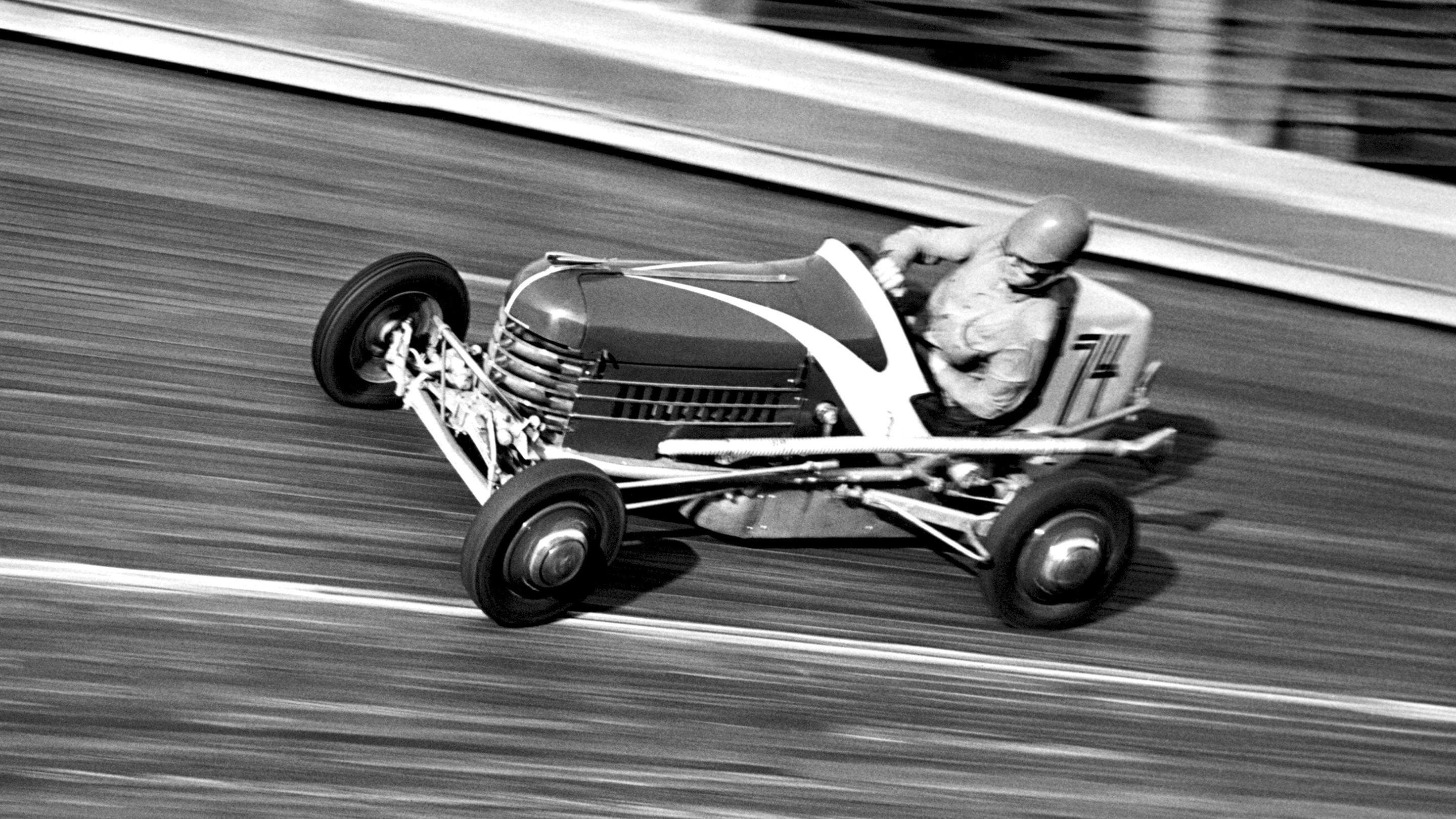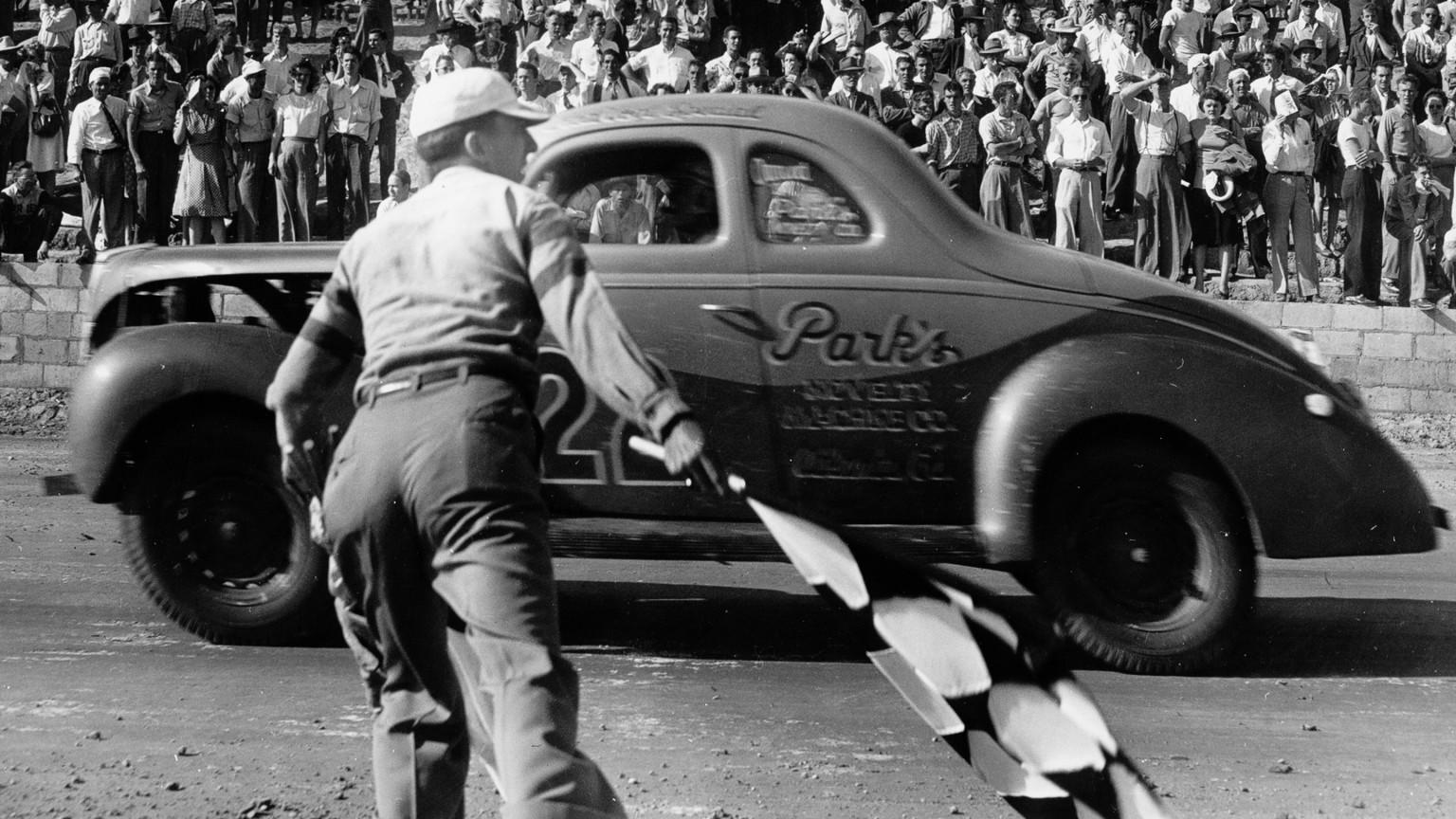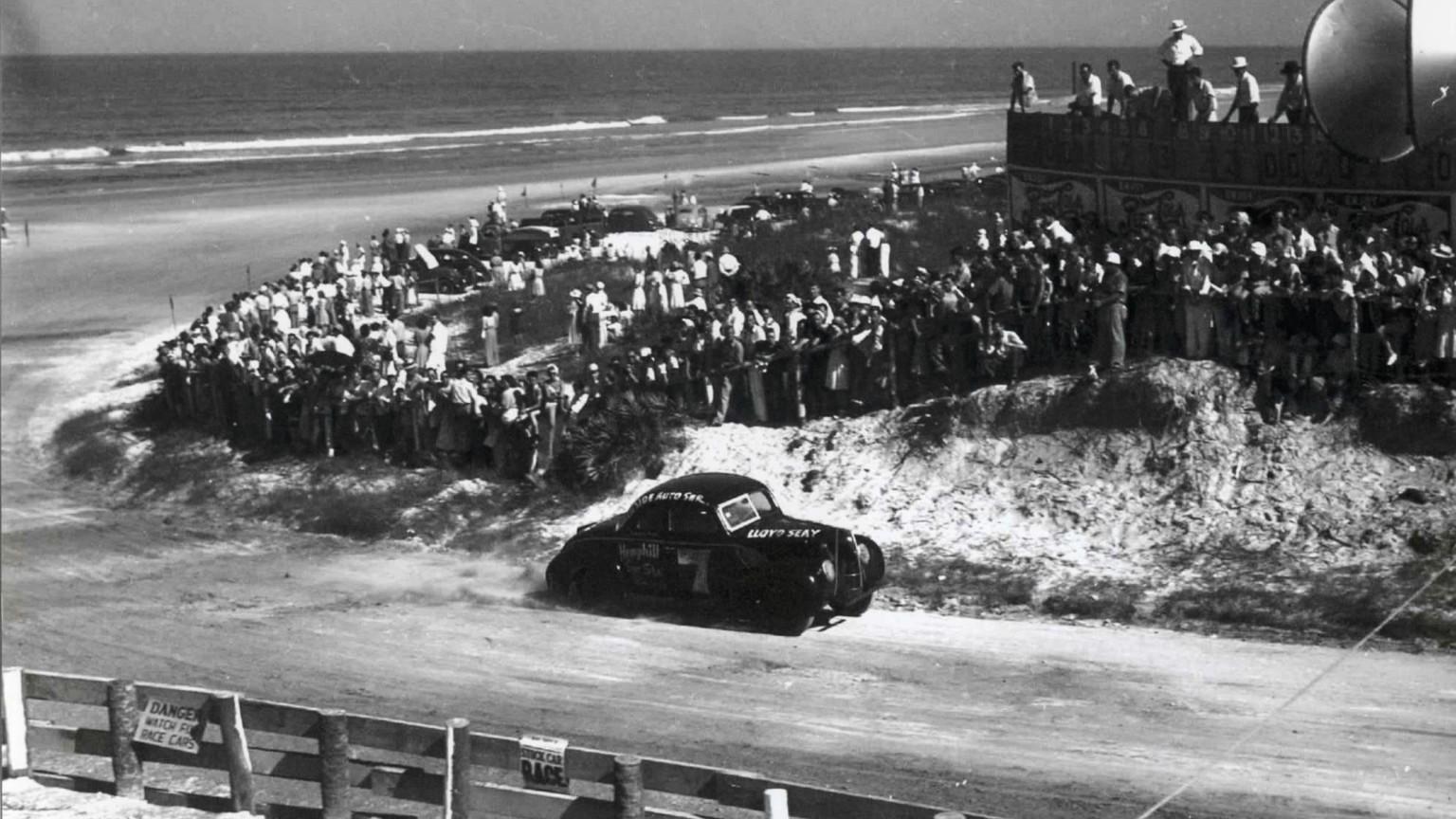
America’s Love of Fast Cars Is Rooted in the Dangerous Days of Prohibition
Pinning down the true origins of America’s longstanding fascination with speed is akin to trying to name today’s hottest sports car. In short, it depends on whom you ask.
It’s clear, however, that the days when outlaws took to dangerous backroads to smuggle moonshine have helped fuel our love for fast automobiles. The desire to live life a bit more on the edge—a necessity of the Prohibition era—continues to influence our addiction to speed.
Ken Martin, a historian for NASCAR, which credits its roots to the wild days of bootlegging, says the very nature of illegal business required an appreciation for high-performance cars. “In transporting the moonshine payload from the rural originations to population centers, it was imperative that the law was avoided,” says Martin. “Communication was primitive, making it hard to sound a warning. The key was varying your route, taking the roads less patrolled, and learning all the alternate escape routes. Most loads were between 75 and 180 gallons of moonshine with a payload of 800 pounds or more. This much weight, traveling over less than perfect roads, caused stress on the engines, tires and suspension. It was important that all of those components were beefed up and modified for durability and speed.”

For moonshiners, that beloved Ford V8 engine would propel many into legitimate careers as professional racers. Two of the most notable were Roy Hall, who was arrested for bank robbery and running moonshine, and Ron Seay, who was murdered by his cousin at the young age of 21 in a dispute over a liquor deal gone awry. It was a bit ironic, however, that the ’32 Ford Flathead V8 was so popular among bootleggers, considering that Henry Ford, the founder of Ford Motor Co., was vehemently opposed to his workers drinking alcohol. Even more interesting, Clyde Barrow, part of the notorious bank robbing duo Bonnie and Clyde, is believed to have written a letter to Henry Ford, praising him for making the Ford Flathead V8 to help the two bank robbers outrun the law.
“The good old boys couldn’t afford Packards or big Lincolns. So, when Ford rolled out the 1932 Ford, that was really the car,” auto historian Rex Roy tells Playboy. “Even Dillinger liked the car because it was fast. It was the rocket of the day.”
One of the biggest stimuli for moonshiners during the height of bootlegging—aside from the whiskey itself, that is—was the 1932 Ford Flathead V8, which was the first low-priced, mass-marketed vehicle to have a V8 engine. The fact that the powerful ’32 Ford only cost about $500 new made it a perfect fit for those in need of a fast set of wheels.
“The positive social mood of the 1920s, during Prohibition, manifested itself in many ways, including the need for speed,” Gunn tells Playboy. “Music tempos were increasing. Tea houses were springing up as well. People’s need and desire for a stimulus was growing, and the cars were becoming faster.”
Murray Gunn, head of global research at the market forecast company Elliott Wave International, also attributes the passion for fast automobiles during Prohibition to the general optimism people had about life during the era.
“Moonshining was a competitive game,” says Kayla Black, director of operations for the American Prohibition Museum, based in Savannah, Georgia. “It was a place for people in rural areas to make money, and that competition among moonshiners translated easily into how fast their cars could go. And that transferred into the track. It was a way to get money and fame and recognition that they wouldn’t be able to get anywhere else.”

Adds Roy, "The common denominator was that you had to have a fast car to outrun the cops and the revenuers [the IRS]. If you had the fast car and the skills to drive it, then you could outrun the guy next to you on the track. That’s the connection between guys running moonshine in the South to NASCAR.”
There were also some well-known mechanics who came out of the Prohibition era, those like Red Vogt and Sherman “Moose” Helmey, who chopped cars for Al Capone during the mobster’s rum runs in the wetlands of Savannah. Helmey was famously known for being able to quickly swap out radiators at his garage when the police would shoot them out in an effort to catch the bootleggers.
Author Neal Thompson, who writes extensively about the wild world of moonshiners in his book Driving With the Devil, says there was a punk spirit that fueled the world of fast cars.
“There was this rebellious attitude that fueled bootleggers and the guys who became racers during the period. It was a very ‘fuck you' attitude,” the author tells Playboy. “It was the idea, ‘we’re going to learn how to make our own liquor, we’re going to learn how to drive really fast to ship it and we could care less what the government says about it.’ It was the attitude that, ‘the government can’t tell me what to do,’ this sense of freedom that in many ways has always been part of the American spirit that fueled racing, especially with NASCAR.”
Those wild bootlegging runs would go on to fuel the birth of stock-car racing, with the Ford V8 leading the charge.“In NASCAR’s inaugural season of 1948, the cars that competed were classified as ‘Modifieds’,” explains Martin. “The rules allowed for modifications to the engine and suspension to improve performance and durability. From 1942 to 1946, the U.S. auto industry concentrated on the war effort and no new cars were built. There was a good supply of pre-WWII vehicles that were easily modified for racing. With the mass-produced Ford V8’s available, it was affordable for many and it was powerful.”
One of the most famous drivers birthed out of the era is legendary NASCAR racer Junior Johnson, who developed a passion for automobiles as a kid growing up in a family of moonshiners in North Carolina’s Wilkes County, an area once known as the “Moonshine Capital of the World.”

The Johnson family were already notorious bootleggers when Junior was born in 1931, which only made it natural that he would pick up on the family trade. No strangers to the law, the Johnsons were actually involved in the largest alcohol raid in U.S. history, with federal authorities seizing 400 gallons of moonshine from the family’s home. Junior himself wound up spending a year in prison in Ohio for having an illegal still. But he reportedly was never caught during any of his infamous moonshine runs.
During the ’60s and ‘70s, the addiction to fast cars ignited a new kind of spirit of competition in the world of automobiles, Roy explains. “Not that it created a new generation of moonshine runners, but it helped Baby Boomers know they could make their own cars faster and have fun with them.”
These days, our craving for fast automobiles is being fed by a slew of even higher-performance cars, spanning from the 800-plus horsepower Dodge Demon to the Koenigsegg Agera RS, which has a top speed of 277 mph. Speed has also become a major selling point in the rapidly evolving world of hybrid and electric vehicles.
“The intoxication of fast cars…comes from it being visceral,” contends Roy. “It’s a sensory thing. It’s a control-the-machine thing. It’s a test-my-skills thing. It’s an adrenaline thing. No video game or virtual experience will ever match going full-throttle in a car. Ever.”






